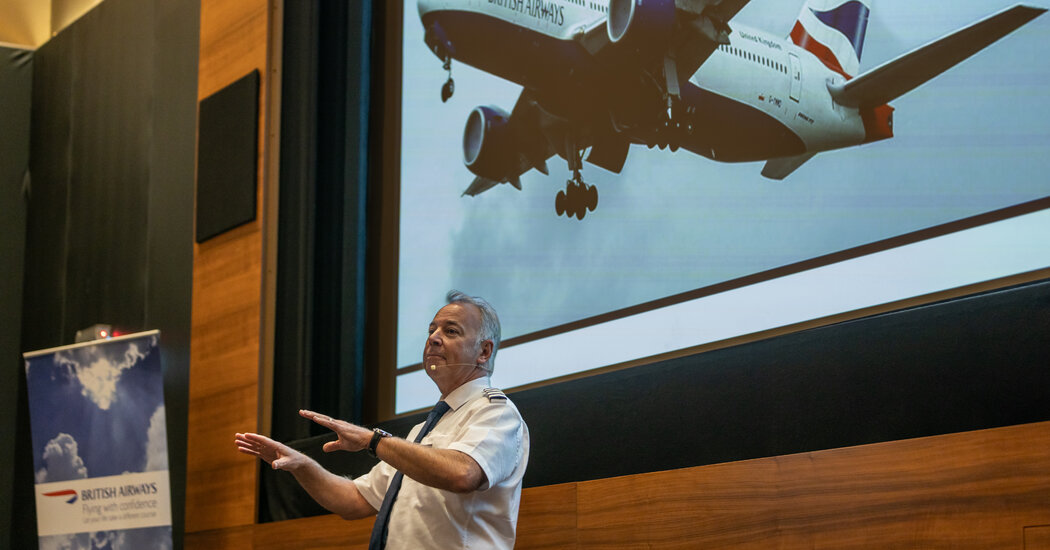No sooner had British Airways Flight 9240 roared into the air over Heathrow Airport than the cabin air was pierced by a sharp, scary noise, like an alarm or a siren. The power surged and then seemed to falter, and the plane became worryingly quiet. (Too quiet?)
What was it? Images of catastrophic scenarios — birds, engine failure, parts falling off, total systemic breakdown — pinballed through the passengers’ imaginations as the plane seemed to struggle to find its equilibrium. Unease gripped the cabin. But then a disembodied voice wafted soothingly over the public-address system. “Everything’s normal,” the voice said. “The plane is fine.”
This emotional roller coaster of a flight, a 35-minute loop in the air that started and finished at Heathrow, was the culmination of the airline’s “Flying With Confidence” course, aimed at people who are afraid to fly — the lightly nervous as well as the abjectly terrified.
The course includes a deep dive into the mechanics and operation of an airplane. There’s also a section on how pilots are trained to deal with various scenarios — including cabin depressurization, malfunctioning landing gear, holes in the fuselage and sudden gusts of wind on the runway that force what is called a “go-around” — when a pilot suddenly aborts the landing and sends the plane barreling straight back into the sky. The day ends when the attendees — or at least those who didn’t leave early — board an actual plane for a real-life flight.
As many as 40 percent of all airline passengers have at least mild apprehension about flying, experts say, and people with serious aviophobia fall roughly into two groups. About 20 percent have “an underlying anxiety that manifests as fear of flying,” said Douglas Boyd, an aviation researcher who runs a fear-of-flying course in Houston. Another 70 to 75 percent, he said, “think that something bad will happen to the plane — there will be a fire, the engine will fall off, the pilot is drunk, it’s going to crash.” (The rest have a hybrid of worries.)
Flying is objectively low-risk, and 2023 was the safest year for jet travel ever, according to the International Air Transport Association. But fear of flying hardly seems irrational, what with reports of aircraft malfunctions, overworked air traffic controllers and the sense that climate change is making turbulence worse.
For instance: On Jan. 5, a door plug — a door-sized panel on the side of an aircraft — blew…
Click Here to Read the Full Original Article at NYT > Travel…
